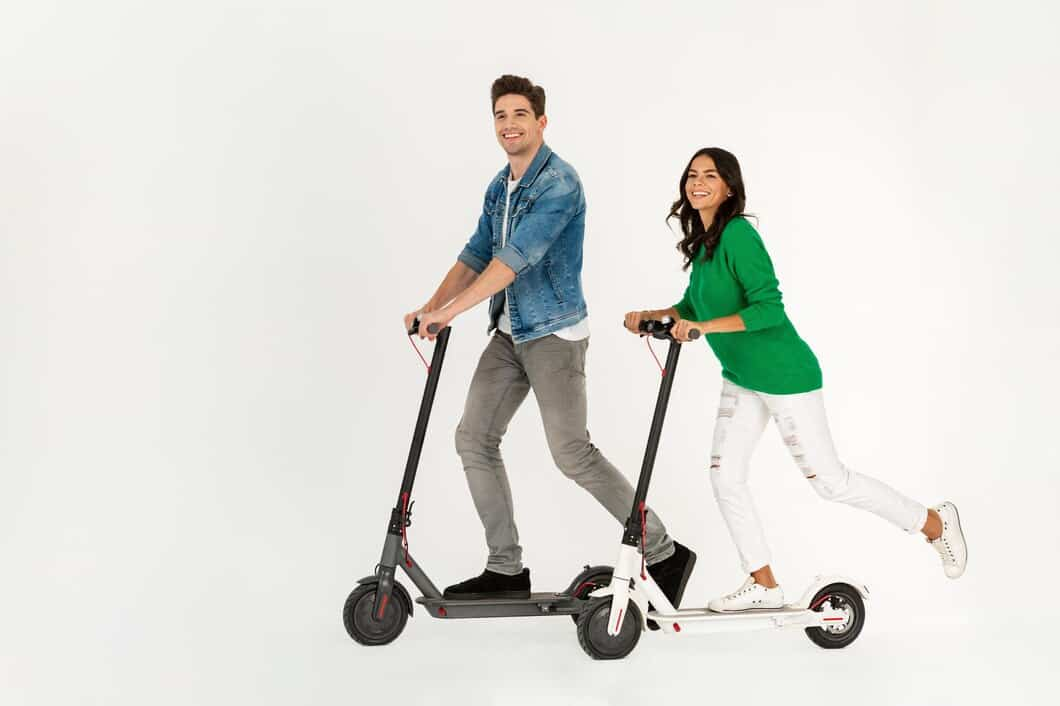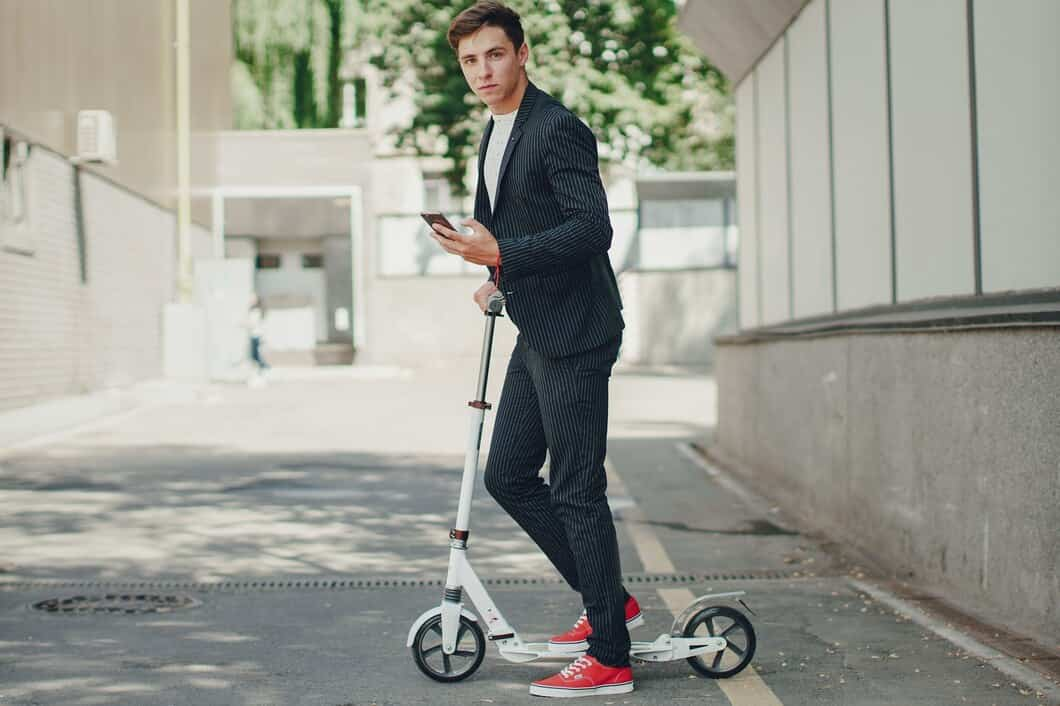Do E-bikes Go Without Pedalling?
Time: 06 Apr 2024 22:46


The different types of e-bikes
E-bikes are becoming increasingly popular as a way to get around town, and there are now a variety of different types of e-bikes available. Some of the most common types of e-bikes include:
1. Pedal-assist e-bikes: These e-bikes provide assistance when you pedal, making it easier to ride up hills or into strong winds.
2. Throttle-only e-bikes: These e-bikes have a throttle that you can use to control the motor, without pedaling.
3. Electric-assist bicycles: These e-bikes have a motor that provides assistance when you pedal, but the motor does not engage unless you are pedaling.
How do e-bikes work?
E-bikes work by using a battery-powered motor to assist the rider in pedaling. The motor is usually located in the rear wheel or the crankset, and it provides power when the rider pedals. The amount of power provided by the motor is typically adjustable, so the rider can choose how much assistance they want. E-bikes also typically have a throttle, which allows the rider to use the motor without pedaling.
The battery in an e-bike provides the power for the motor. The battery is usually located in the frame of the bike, and it can be charged using a standard electrical outlet. The range of an e-bike depends on the size of the battery and the amount of power used by the motor. Most e-bikes can travel between 20 and 50 miles on a single charge.
E-bikes are a great way to get around town or commute to work. They are especially helpful for people who live in hilly areas or who have long commutes. E-bikes are also a good option for people who want to get more exercise but don't want to push themselves too hard.
If you are considering buying an e-bike, there are a few things to keep in mind. First, e-bikes are more expensive than traditional bikes. Second, e-bikes require more maintenance than traditional bikes. Third, e-bikes can be heavy and difficult to transport. However, if you are willing to spend the money and put in the time, an e-bike can be a great way to get around.
The benefits of using e-bikes
E-bikes offer a number of benefits over traditional bikes, including the ability to travel further and faster with less effort. They are also a great option for people who live in hilly areas or who have difficulty pedaling due to physical limitations.
One of the biggest benefits of e-bikes is that they can help you travel further distances. With an e-bike, you can easily travel 20-30 miles on a single charge, which is much further than you could travel on a traditional bike.
E-bikes are also a great option for people who live in hilly areas. With an e-bike, you can easily climb hills without having to pedal too hard. This can make cycling a much more enjoyable experience, especially if you are not in great physical shape.
Finally, e-bikes are a great option for people who have difficulty pedaling due to physical limitations. With an e-bike, you can still enjoy the benefits of cycling without having to worry about putting too much strain on your body.
The drawbacks of using e-bikes

Although e-bikes provide many benefits, such as reducing carbon emissions and helping people to get around without breaking a sweat, they also have some drawbacks. One of the main disadvantages is that e-bikes can be expensive, costing significantly more than traditional bicycles. Additionally, the batteries on e-bikes can take several hours to recharge, and their range can be limited, especially if the motor is used frequently. Furthermore, e-bikes can be heavier than traditional bicycles, which can make them difficult to carry up stairs or into buildings. Finally, some people may find that the assistance provided by the motor reduces the enjoyment of cycling, as it can make it feel less like a workout.
While e-bikes offer a convenient and eco-friendly way to get around, it is important to consider the potential drawbacks before making a purchase. If you are looking for a cost-effective and portable mode of transportation, a traditional bicycle may be a better choice. However, if you are willing to spend more money and are looking for a way to reduce your carbon footprint, an e-bike could be a great option.
It is also worth noting that the drawbacks of e-bikes can vary depending on the specific model and type. For example, some e-bikes have removable batteries, which can be charged separately from the bike. This can help to reduce the inconvenience of having to wait for the bike to recharge. Additionally, some e-bikes are designed to be lightweight and portable, making them easier to carry and store.
Ultimately, the decision of whether or not to purchase an e-bike depends on your individual needs and preferences. If you are looking for a convenient, eco-friendly, and enjoyable way to get around, an e-bike could be a great option. However, it is important to be aware of the potential drawbacks before making a purchase.
Who should consider using an e-bike?
Electric bikes, often called e-bikes, are a great option for many people looking for an alternative to traditional bicycles or even cars. They offer many benefits over traditional bikes, including the ability to travel longer distances, climb hills more easily, and commute to work or school without arriving sweaty. These benefits make e-bikes a great choice for a wide range of people, including:
• People who want to get more exercise but find traditional bikes too challenging.• People who have long commutes or live in hilly areas.• People who want to reduce their carbon footprint.• People who are looking for a fun and healthy way to get around.
Safety tips for e-bike riders
E-bikes are a great way to get around, but it's important to remember that they're still bicycles and you need to take the same precautions as you would when riding a regular bike. Here are a few safety tips for e-bike riders:
1. Wear a helmet. This is the most important safety precaution you can take. A helmet can protect your head from serious injury in the event of a fall.
2. Obey the traffic laws. E-bikes are classified as bicycles in most jurisdictions, so you need to obey the same traffic laws as other cyclists. This means stopping at stop signs, yielding to pedestrians, and riding in the correct direction of traffic.
E-bike laws and regulations
E-bike laws and regulations vary from location to location. In many places, e-bikes are treated similarly to traditional bicycles. For example, in the United States, e-bikes are not subject to the same regulations as motor vehicles and can be ridden in bike lanes and on sidewalks where traditional bicycles are allowed. However, some localities have stricter regulations for e-bikes. Be sure to check the local laws and regulations in your area before riding an e-bike.
E-bikes can be a great way to get around town. They're environmentally friendly, they're easy to ride, and they can help you save money on gas. However, it's important to be aware of the laws and regulations governing e-bike use in your area before you start riding one.
The future of e-bikes
E-bikes are becoming increasingly popular as a mode of transportation, and their future looks bright. As technology continues to improve, e-bikes will become more efficient, more affordable, and more accessible. This will lead to even greater adoption of e-bikes, which will have a positive impact on the environment and on our health. In addition, e-bike technology is constantly evolving, with new developments being made all the time. As a result, e-bikes are likely to become even more versatile and appealing in the years to come.
One of the most exciting developments in the future of e-bikes is the development of more powerful motors. This will allow e-bikes to travel further distances and climb hills more easily. It will also make e-bikes more practical for use in a wider variety of applications, such as commuting, running errands, and touring.
Another exciting development is the development of more efficient batteries. This will allow e-bikes to travel further on a single charge. It will also make e-bikes more affordable to operate, as riders will not have to replace their batteries as often.
Frequently Asked Questions
Do e-bikes have a throttle only mode?
Yes, most e-bikes have a throttle-only mode. This mode allows you to ride the bike without pedaling, using only the motor to power the bike.
How fast do e-bikes go in throttle only mode?
The speed of an e-bike in throttle only mode depends on the power of the motor and the terrain. Most e-bikes can reach speeds of up to 20 mph (32 km/h) in throttle only mode.
Are e-bikes street legal?
E-bikes are street legal in most countries, but the regulations vary from country to country. In the United States, e-bikes are classified as bicycles and are subject to the same laws as bicycles.
Can you ride an e-bike without pedaling?
Yes, you can ride an e-bike without pedaling, using only the motor to power the bike. However, some e-bikes may require you to pedal before the motor will engage.
Summary

Recommendation
Do e-bikes go without Pedalling?
The different types of e-bikes E-bikes are becoming increasingly popular as a way to get around town, and there are now a variety of different types of e-bikes available. Some of the most common type...
- What is the fastest legal speed for an ebike?
Electric bikes, or e-bikes, are becoming increasingly popular as a mode of transportation. They offer a number of advantages over traditional bicycles, including the ability to travel further distance...
Are e-bikes good for beginners?
The potential benefits of electric bikes for beginners cannot be overstated. E-bikes offer a gentler introduction to cycling, allowing riders to explore further without becoming overly fatigued. They...
Is a 500w motor enough for an ebike?
The increase in popularity of electric bikes (ebikes) has been fueled by the growing demand for alternative modes of transportation. One of the most important factors to consider when choosing an ebik...
- What is the difference between pedal assist and electric bike?
An electric bike, also known as an e-bike, is a bicycle with an integrated electric motor. The motor can be used to assist the rider with pedaling, or it can be used to power the bike independently. P...



